The extraordinary story of wing commander
Graeme Harrison
Commanding 190 squadron
Royal Air Force
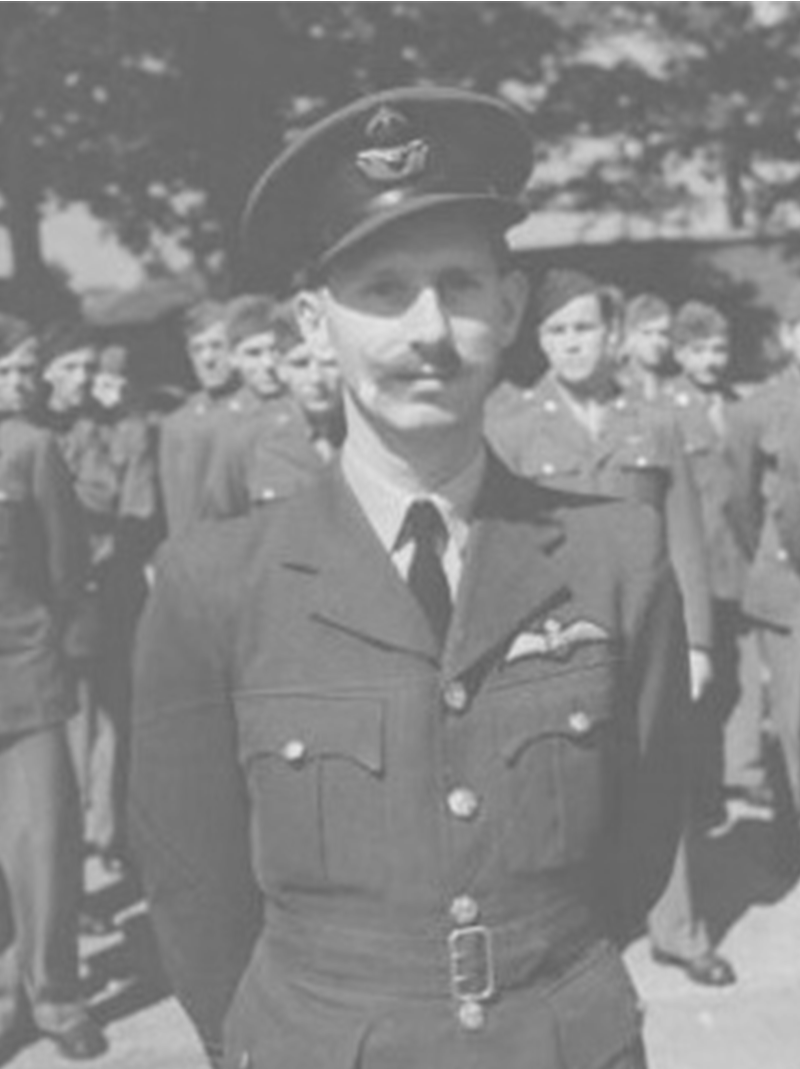
Throughout the world wars, hundreds of thousands of civilians worked tirelessly to produce everything the armed forced needed to continue the fight. Delivering those supplies to front line was vital and dangerous work. From getting meals to the men in trenches at Ypres, to carrying supplies across East Africa, to driving lorries through the jungles of Burma, those doing the delivering often risked their lives to do so.
in Ontario, Canada
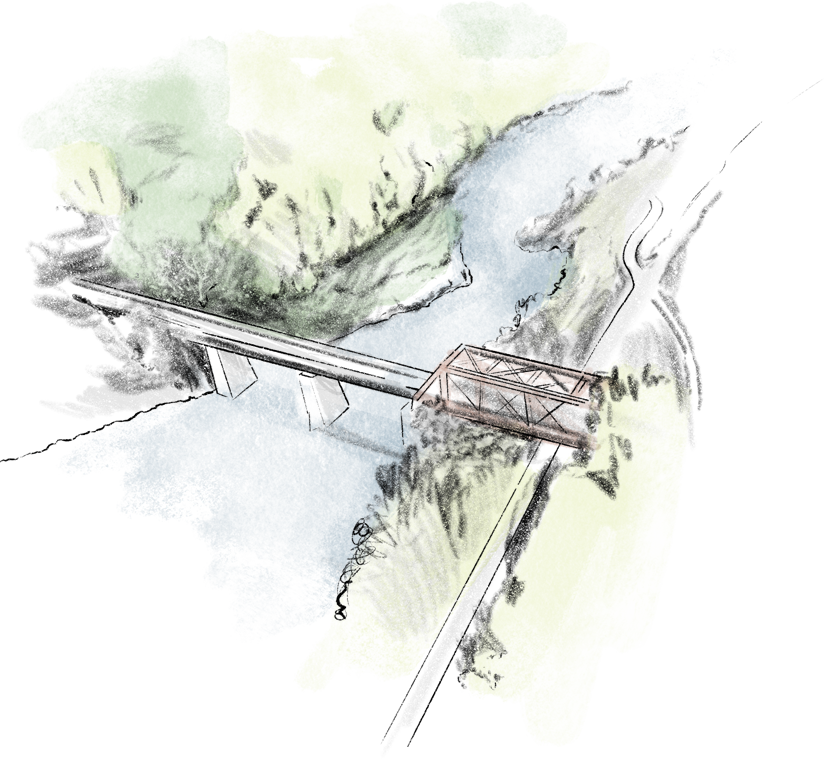
Graeme Harrison was the son of Leonard, a farmer and farm machinery salesman, and Ethel, a schoolteacher. Graeme was born in Ontario, Canada but the family returned to the UK and lived in Rustington on the south coast in Sussex when he was nine. Graeme attended Bognor Regis Prep School and then The King's School, Ely, before going on to study for a medical degree. His heart was set upon a career with the Royal Air Force (RAF) and after much pleading with his mother, he finally received her blessing to join the RAF in 1934.
After graduating from officer training at RAF Cranwell, Graeme rose steadily through the pre-war ranks of the RAF and had achieved the rank of Flight Lieutenant when war was declared in September 1939.

During the early years of the Second World War, Graeme was stationed on Sri Lanka, where he was promoted to Squadron Leader in 1940. In March 1940 he married Aline Stevens at St. John's Church, Fort Colombo.
The newly married couple returned to the UK in February 1942, and lived in Worthing, Sussex. Their first daughter, Sonia, was born later that year. In September, Graeme was promoted to Wing Commander and over the next 15 months he flew dozens of dangerous night-time heavy bomber raids against targets in Germany. During this period RAF bomber losses were terrible, and each night when he left Aline and Sonia, there was a very real chance he would not be coming home. He also flew numerous daylight raids, leading aircraft of the US 8th Army Air Force (USAAF) against German targets. For his courage and determination during these hazardous daylight assaults he was awarded the US Silver Star, receiving the medal during a ceremony on 17 July 1943, from the Major General Ira Eaker, second in command of the 8th Army Air Force.
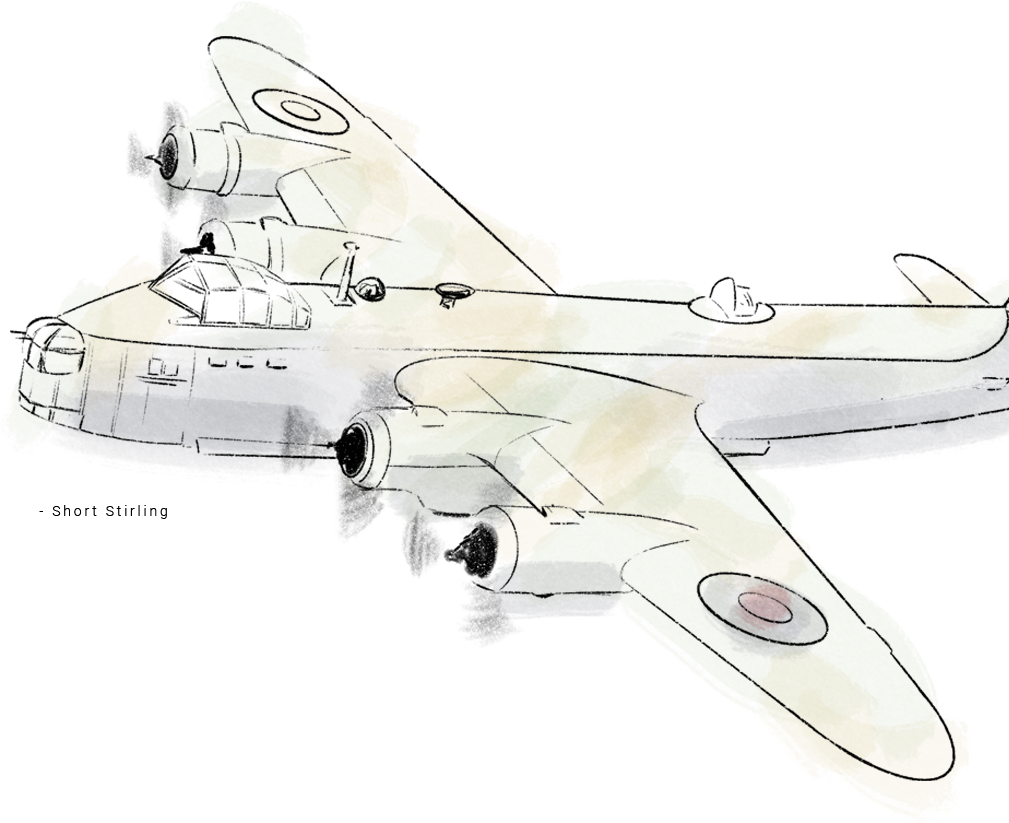

In January 1944, Graeme was given the task of reforming 190 Squadron into an airborne force support and transport squadron. Based at RAF Fairford in Gloucestershire, Graeme and his family lived in the nearby village of Whelford. On D-Day, 6 June 1944, Graeme and his squadron transported over 400 British paratroops to Normandy, and then flew almost continuous support missions, dropping vital supplies to the paratroopers on the ground over the next few weeks.

In September 1944, British and American forces launched Operation Market Garden. Airborne forces were dropped by parachute and glider to capture vital bridges over the Rhine River in the Netherlands, and Allied commanders hoped this daring operation would secure a route into Germany and end the war in 1944.
Graeme and his squadron were with the first wave of aircraft dropping the British 1st Airborne Division at Arnhem.
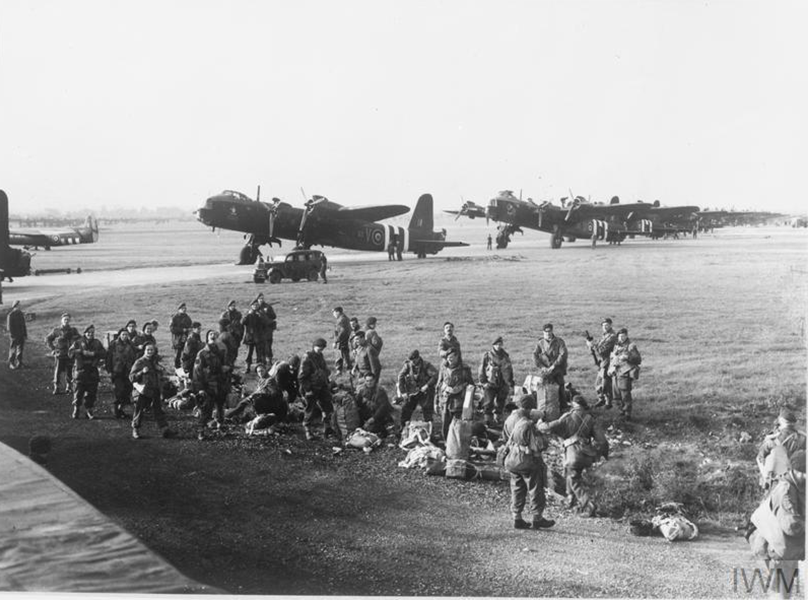
Tragically, the operation went badly wrong when it was discovered that German armoured formations were based nearby. The paratroopers fought tenaciously but had little hope against German tanks.
With the 1st Airborne Division surrounded and battling for its very survival, the only way to keep them in the fight was with supplies dropped from the air. Over the next week Graeme and his squadron flew to Arnhem multiple times a day to drop supplies to the besieged troops. The Germans knew they were coming and the route they had to take, and dense anti-aircraft fire filled the sky around the drop zones.

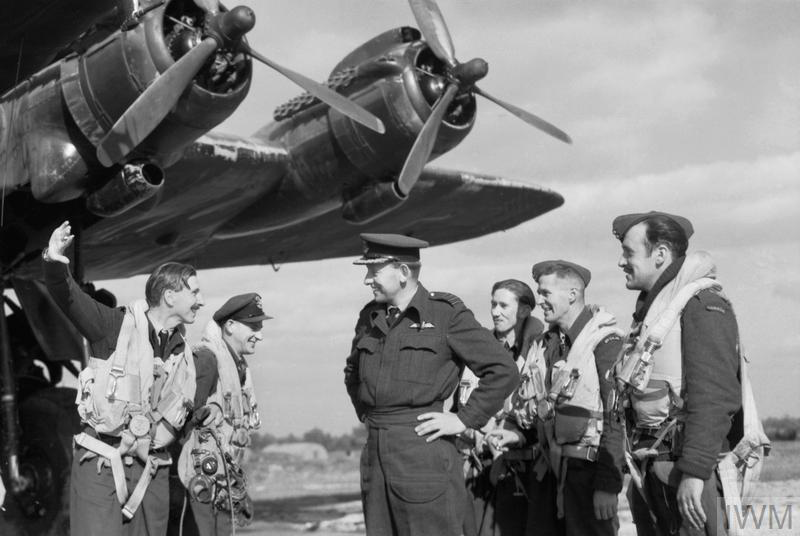
On 21 September Graeme's squadron had only 10 serviceable aircraft left but they set off for Arnhem, Graeme piloting the lead plane. With shells exploding all around his aircraft, Graeme flew low, slow and straight over the centre of British resistance, the Hartenstein Hotel, to give his crew the best possible chance of effectively dropping the supplies they carried to the men below. Just after clearing the drop zone, they were hit and as they were so close to the ground there was no chance of bailing out to safety.
Graeme aged 29, his aircrew of six, and the two Airborne dispatchers tasked with releasing the supplies, were all killed. In a final twist of tragedy, Aline gave birth to Graeme's second daughter, Tessa, soon after his death.

Neil Walker was on the ground at Arnhem serving as a cameraman
with the Army Film and Photographic Unit. He was there at the
Hertenstein Hotel and witnessed the attempt by Graeme and his men
to deliver supplies to them.
Upon Graeme's headstone Aline chose the words of the Arnhem epitaph written by AP Herbert and published in 1945:
“From sky to earth, for liberty I fell.
I fought, I found my wings again.
Farewell”
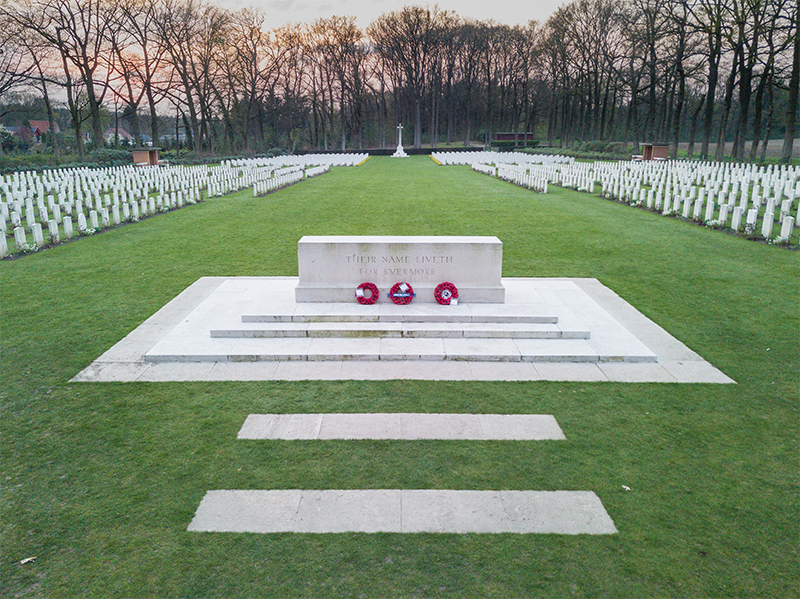
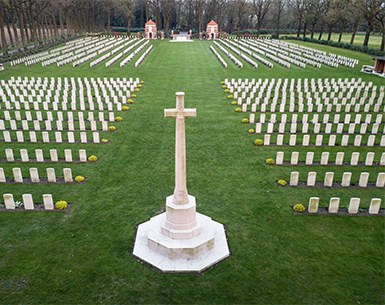
The British forces at Arnhem surrendered a few days after Graeme's aircraft went down. Hundreds of men had been killed in the fierce fighting. Some were buried by their comrades, others by local Dutch people or by the Germans. Graeme and his crew were initially laid to rest in Vluchtheuvel Churchyard not far from where his aircraft came down but in late 1945 his body was moved to a newly constructed military cemetery at Oosterbeek, on the outskirts of Arnhem. Graeme lies at rest alongside his crew, other RAF comrades, and hundreds of paratroopers he risked his life to supply. Each year, Dutch children lay flowers on all the graves in this cemetery as a mark of thanks and respect.
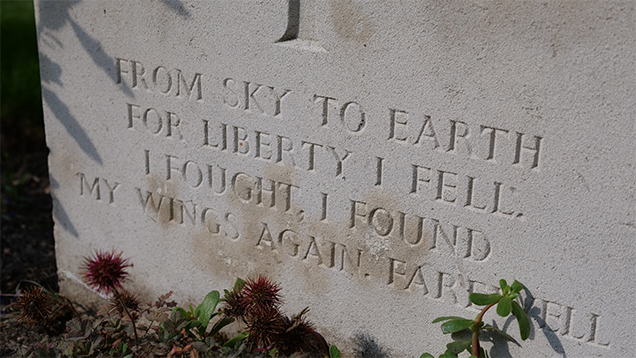
Graeme Harrison
1915 - 1944
We'd love to hear your story
We use necessary cookies to make our site work. We'd also like to set analytics cookies that help us make improvements by measuring how you use the site. These will be set only if you accept.
